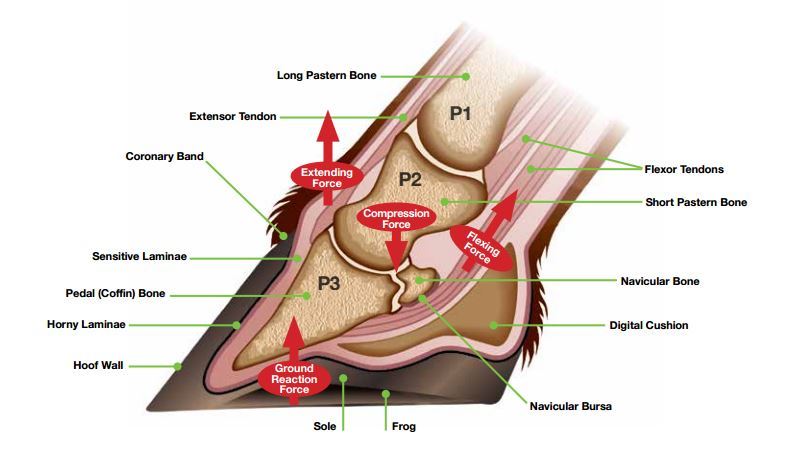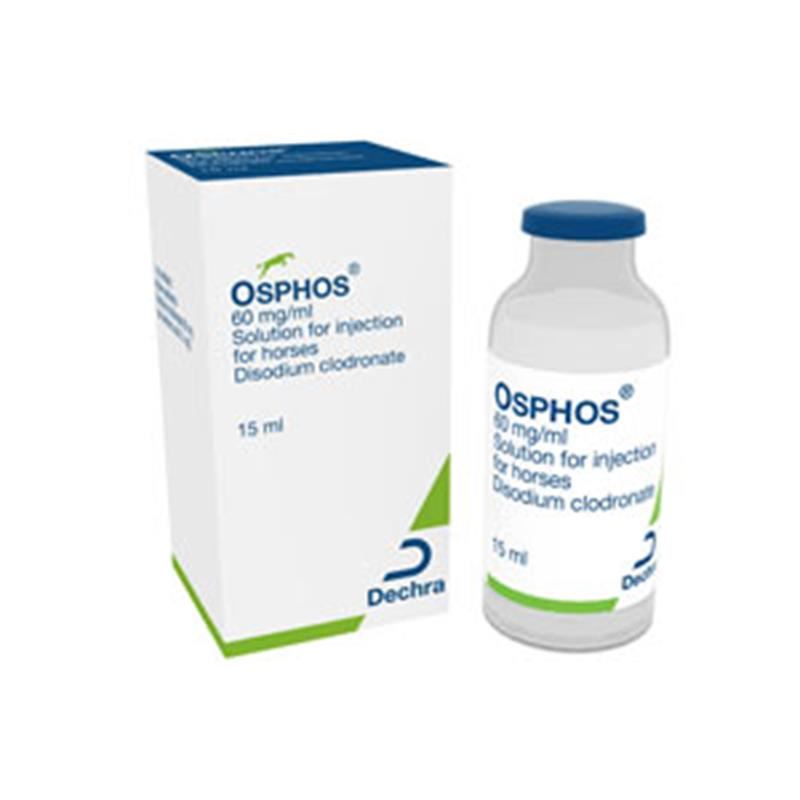Navicular syndrome has long been a catch-all term used on any heel pain in horses; even more elusive than a concrete diagnosis has been an effective form of controlling the pain associated with it.
By Sarah E. Coleman

In the beginning of 2014, the equine community welcomed the approval of two new drugs by the U.S. Food and Drug administration: Tildren and OSPHOS. Though Tildren has long been used in human medicine, its release into the equine market is new.
Both of these drugs are bisphosphonates intended to control the signs of navicular syndrome, which is commonly the cause of front-end lameness in horses. Navicular syndrome is defined as chronic pain arising from the navicular bone and closely related structures (like the deep digital flexor tendon, suspensory ligaments of the navicular bone, etc.). This chronic heel pain includes pathological changes to the ligaments, bone, cartilage and tendons in that area. The exact cause is unknown.
Navicular syndrome can affect any breed of horse at any activity level; affected horses are typically between 4 and 15 years old. There is no one test that can confirm navicular syndrome; but hoof tests, X-rays, nerve blocks and other imaging modalities may be needed to determine if a horse has navicular disease.
Treatment Options
In the past, navicular has been a catch-all term used for a front-end lameness that could not be definitively determined. Treatment options were somewhat limited, with Isoxsuprine (to increase blood flow to the area) and corrective shoeing being the two most-popular treatment options.
Oher treatment options include:
Work and rest protocols determined by the horse’s vet
Pain management (NSAIDs)
Shockwave
Bisphosphonate
Nutraceuticals
What is a Bisphosphonate?
Bisphosphonates are a class of drug that have been used in human medicine for years prior to their introduction to the equine markets, but they are used for different reasons in human medicine: mainly to decrease bone loss (osteoporosis). Bone is a living tissue that is constantly forming and resorbing in a balance; in diseased bone, this balance is interrupted. Bisphosphonates attach themselves to active sites on bones, and block the ability of the bone to regrow.
Interestingly, Bisphosphonates were first created as industrial chemicals to prevent corrosion.
Dr. Laura Werner, a field care veterinarian and surgeon at Hagyard Equine Medical Institute, has used Osphos extensively since its introduction in early 2014. Prior to Osphos use, Dr. Werner treated cases of navicular with Tildren, as well as with corrective shoeing, joint or navicular bursa injections, isoxsuprine, shockwave therapy and nonsteroidal anti-inflammatories.

Osphos is an intramuscular injection, given in three separate sites on the horse during one treatment, so Dr. Werner typically utilizes the neck and pectoral muscles as administration sites. Similar to Tildren, it can take up to two months to see the full effects of Osphos treatment. It can be re-administered every three to six months or longer, based on clinical signs.
Side Effects
Dr. Werner notes that colic or pain at the injection site are possible adverse reactions to Osphos. Additionally, she recommends that a horse that is being treated be monitored for hydration and kidney values, especially in older patients.

The Osphos label notes that owners should watch their horses for two hours after the administration of the drug, looking for agitation, pawing, and other abnormal behavior like lip licking and head shaking. The horse may also experience cramping; if this occurs, it is recommended that the owner hand walk the horse for 15 minutes.
A Word of Caution
The recommendations on Osohps is that it not be given to horses less than four years old, and Dr. Werner notes that it is contraindicated in fracture cases as the drug inhibits osteoclasts and those cells are an important part of fracture healing.
As always, it’s important to know the USEF and FEI guidelines on withdrawal times for any drug you are administering. Osphos withdrawal time for the FEI is 28 days.
Osphos (and Tildren) can be effective tools in managing the pain associated with navicular syndrome. As with any medication, care must be give during administration and a close eye kept on the animal being treated.
